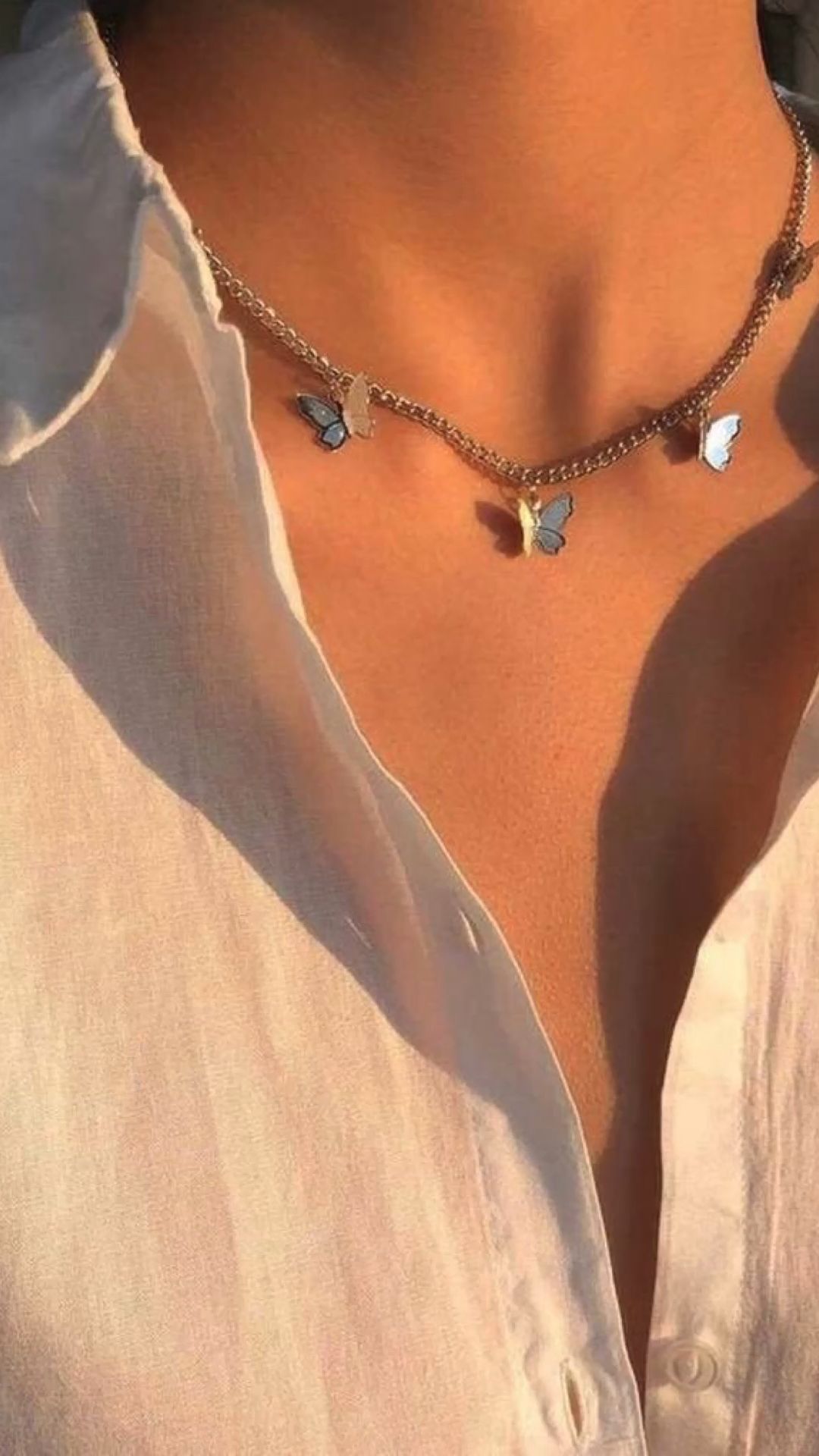For centuries, Southwest Indian Jewelry has captivated the hearts and minds of people worldwide with its timeless beauty and intricate designs. Rooted in a rich cultural heritage, these stunning accessories reflect the traditions, beliefs, and craftsmanship of Native American tribes. From ancient techniques passed down through generations to contemporary interpretations that honor their cultural essence, Southwest Indian Jewelry holds a significant place in both the fashion world and Native American history.
To truly appreciate the beauty of Southwest Indian Jewelry, it is essential to understand its origins and significance. Tracing back to prehistoric times, these jewelry pieces were crafted using techniques and materials that reflected the natural resources available to Native American tribes. The use of turquoise, shell beads, silver, and gold showcases the deep connection between these communities and their natural surroundings.
Beyond their undeniable aesthetic appeal, Southwest Indian Jewelry carries profound cultural symbolism. Each piece tells its own story through intricate engravings, unique motifs, and sacred symbols representing spiritual beliefs or tribal traditions. These adornments not only serve as personal expressions but also act as powerful reminders of cultural identity and resilience for Native American communities.
As we embark on this journey into the world of Southwest Indian Jewelry, we will delve into its fascinating history. From exploring ancient crafting methods to recognizing contemporary artists who have shaped this art form’s legacy, we will uncover the extraordinary artistry behind these cherished accessories. It is through this exploration that we can truly understand and appreciate the enduring beauty and significance of Southwest Indian Jewelry.
Pre-Historic Origins
In the section titled “Pre-Historic Origins: Tracing the Roots of Southwest Indian Jewelry,” we will delve into the ancient history of Southwest Indian Jewelry and explore its origins. Native American tribes have a rich tradition of adornment dating back thousands of years, and through this exploration, we will uncover the techniques, materials, and styles that were historically utilized in creating these exquisite pieces.
To begin, let’s take a closer look at the materials used. Native American tribes in the Southwest region employed a variety of materials to craft their jewelry. These materials included shells, beads made from various organic substances such as bone and wood, and the iconic turquoise stone.
Turquoise was especially revered by many tribes for its beauty and significance in their spiritual beliefs. As time went on, silver became an important material introduced to Native American artisans by Spanish colonizers in the late 19th century. Its malleability allowed for more intricate designs, and it quickly became incorporated into traditional Southwest Indian Jewelry.
Moving beyond materials, let’s explore the techniques employed by Native American artisans in creating these timeless pieces. Hand-stamping is one notable technique that involves pressing metal stamps onto silver or other metals to create intricate patterns and designs. This method adds texture and visual interest to jewelry pieces such as bracelets, rings, and earrings.
Stone inlay is another technique commonly used where small stones are precisely cut and set into jewelry using various adhesives or bezel settings. This creates a beautiful mosaic-like effect on the surface of the piece.
Additionally, beadwork has played an essential role in Southwest Indian Jewelry throughout history. Beads made from various materials like turquoise, shell, or seed beads were often woven intricately with other elements such as leather or silver strands to create eye-catching necklaces or bracelets.
Understanding these pre-historic origins provides us with valuable insight into the development of Southwest Indian Jewelry over time. By tracing its roots back to ancient techniques and materials, we gain a deeper appreciation for the craftsmanship and cultural significance behind these remarkable pieces.
Cultural Significance
Southwest Indian Jewelry holds immense cultural significance for Native American tribes, as each piece is adorned with symbols and motifs that carry deep meanings and reflections of tribal traditions. Understanding the symbolism behind these exquisite pieces allows us to appreciate their profound connections to spirituality, nature, and the rich history of Native American culture.
One common symbol found in Southwest Indian Jewelry is the Thunderbird, a powerful being associated with storms, rain, and transformation. This mythical bird is believed to bring blessings and protection to its wearer. The Thunderbird represents the sacredness of water and its ability to nourish life, making it a symbol of renewal and growth.
Another significant symbol in Southwest Indian Jewelry is the corn stalk. Corn has always been an essential part of Native American culture, providing sustenance and serving as a symbol of fertility and abundance. Depicting corn stalks in jewelry signifies prosperity and a connection to the land and agricultural heritage.
The sun is another symbol commonly found in Southwest Indian Jewelry, representing life-giving energy, illumination, and spiritual power. This symbol often appears as a radiating design or a stylized face within jewelry pieces. The sun’s presence serves as a reminder of the importance of light, warmth, and spiritual enlightenment in Native American traditions.
| Symbol | Meaning |
|---|---|
| Thunderbird | Blessings, protection, transformation |
| Corn Stalk | Prosperity, abundance, connection to land |
| Sun | Life-giving energy, illumination, spiritual power |
By understanding these symbols and their meanings, we can appreciate the deeper messages conveyed through Southwest Indian Jewelry. Each piece becomes a representation of the tribe’s history, values, and spiritual beliefs. It is essential to respect and honor these symbols and traditions as we engage with and appreciate the beauty of Southwest Indian Jewelry.
Traditional Techniques
Southwest Indian Jewelry is renowned for its exceptional craftsmanship, with each piece reflecting the expertise and skill passed down through generations. In this section, we will delve into the traditional techniques that have been used to create these masterpieces. From intricate silverwork to stone inlay and beadwork, Southwest Indian Jewelry showcases a diverse range of artistry.
One of the most prominent techniques found in Southwest Indian Jewelry is silverwork. Native American artisans developed their own distinctive style of silverwork, characterized by bold designs and intricate details. They honed their skills in shaping and stamping sterling silver to create stunning bracelets, earrings, necklaces, and rings. The use of stamps with unique patterns allowed artisans to create repetitive designs that are iconic to Southwest Indian Jewelry.
Another technique often employed in creating Southwest Indian Jewelry is stone inlay. This involves carefully cutting and shaping various stones such as turquoise, coral, lapis lazuli, and mother-of-pearl into intricate shapes. These stones are then set into channels carved into sterling silver or other metals to create beautiful mosaic-like designs. Stone inlay requires precision and patience as each stone must fit perfectly together to create a seamless pattern.
Beadwork has also been a significant part of Southwest Indian Jewelry for centuries. Native American tribes have utilized a variety of materials including shell beads, turquoise beads, coral beads, and even glass beads obtained through trade routes established with Europeans. Beadwork can be found on items such as necklaces, earrings, cuffs, and belts. The intricate bead patterns often depict symbolic representations of tribal traditions or nature-inspired motifs.
These traditional techniques showcase the artistry inherent within Southwest Indian Jewelry and highlight its cultural significance. They demonstrate the meticulous craftsmanship involved in creating these stunning pieces while preserving the artistic heritage passed down through generations.
- Silverwork: A distinctive style characterized by bold designs and intricate details
- Stone Inlay: Precise cutting and shaping of various stones set into channels to create mosaic-like designs
- Beadwork: Utilizing materials such as shell beads, turquoise beads, coral beads, or glass beads to create intricate patterns
Pueblo Revival and the Rise of Commercialization
Impact of Pueblo Revival Architecture
During the early 20th century, the Pueblo Revival architectural movement had a profound influence on Southwest Indian Jewelry. Inspired by the traditional adobe structures and artistic motifs of the Pueblo people, this architectural style gained popularity in the Southwest region and beyond. The revival movement sought to capture and celebrate the essence of Native American culture, leading to a surge in interest and appreciation for all things associated with the Indigenous peoples of the Southwest.
Jewelry designers began incorporating elements from Pueblo Revival architecture into their pieces, incorporating geometric patterns and motifs inspired by adobe construction, such as zigzags, squares, and step designs. These architectural influences added a unique visual appeal to Southwest Indian Jewelry, attracting both local and international attention.
The Growth of the Tourist Market
Another significant factor that influenced Southwest Indian Jewelry during this period was the growth of the tourist market in the Southwest. As more people visited the region for its rich cultural heritage and natural beauty, they sought authentic keepsakes to commemorate their experiences. Native American artisans recognized this demand and began creating jewelry specifically tailored to cater to tourists.
Trading posts emerged as key outlets for Southwest Indian Jewelry, providing a convenient platform for visitors to acquire these exquisite pieces. Traders often collaborated closely with Native American jewelers, commissioning new designs or suggesting modifications based on market trends. This collaboration resulted in an amalgamation of cultural influences from both sides – Native American craftsmanship rooted in tradition combined with elements that appealed to tourists’ tastes.
The increase in commercialization also created opportunities for Native American jewelers to expand their businesses beyond local markets. As word spread about the exceptional craftsmanship and unique designs found in Southwest Indian Jewelry, demand grew nationwide. Art exhibitions and fashion shows further promoted these creations, positioning them as not simply souvenirs but genuine art forms worthy of recognition.
Introducing New Designs and Techniques
As Southwest Indian Jewelry gained popularity in the commercial market, designers began experimenting with new designs and techniques. Artists were inspired to create innovative pieces that still honored traditional craftsmanship while reflecting creative expressions influenced by their own personal experiences or artistic visions.
One notable development during this period was the incorporation of gemstones from outside the Southwest region. While turquoise remained a beloved stone synonymous with Southwest Indian Jewelry, artists began incorporating other semi-precious stones such as coral, spiny oyster shell, lapis lazuli, and opal. These additions added vibrant colors and expanded the range of visual possibilities.
Furthermore, artists also explored new ways to manipulate metals. Silver was traditionally the metal of choice for many Southwest Indian jewelers due to its affordability and malleability. However, during this time, gold gained popularity among artists seeking to create high-end or exclusive pieces. This experimentation with different metals allowed for further diversification in design as well as catered to varying price points.
The Pueblo Revival era and the rise of commercialization marked a significant period of growth and evolution for Southwest Indian Jewelry. As tourism flourished in the Southwest region, the industry found itself at a crossroads between tradition and adaptation. These influences not only shaped the techniques and designs employed by artisans but also propelled Southwest Indian Jewelry onto a national stage, establishing it as an influential art form in its own right.
Renowned Artists and Influential Styles
Southwest Indian Jewelry has been shaped by the creativity and innovation of numerous talented artists throughout its rich history. These individuals have not only created breathtaking pieces but also left a lasting impact on the industry as a whole. From pioneers who revolutionized traditional techniques to contemporary artists pushing the boundaries of design, Southwest Indian Jewelry has seen the rise of influential styles and icons.
Pioneers of Southwest Indian Jewelry
One of the most revered figures in Southwest Indian Jewelry is Charles Loloma, a Hopi artist who played a pivotal role in transforming traditional Native American jewelry designs. Loloma combined his artistic background with his expertise in silversmithing to create bold and innovative pieces that incorporated unconventional materials such as gold, coral, and lapis lazuli. His work challenged the boundaries of traditional jewelry making and pushed Southwest Indian Jewelry into new realms of expression.
Another significant pioneer is Jesse Monongya, a renowned Zuni jeweler known for his exceptional stone inlay work. Monongya introduced new techniques and designs to the industry, incorporating intricate patterns and multiple stones in his creations. His attention to detail and mastery of stone inlay brought him international recognition and influenced future generations of artists.
Contemporary Trailblazers
Verma Nequatewa is a prominent contemporary artist whose work reflects her Hopi heritage while incorporating modern elements. She is widely recognized for her unique use of silver overlay technique, creating stunning pieces that feature intricate motifs inspired by nature and ancient Native American symbols. Nequatewa’s jewelry celebrates her cultural heritage while maintaining relevance in today’s fashion trends.
Richard Chavez, a member of the San Felipe Pueblo, is another notable figure in modern Southwest Indian Jewelry. His distinctive style combines traditional silverwork with contemporary design elements, resulting in visually striking pieces that captivate collectors worldwide. Chavez’s jewelry often incorporates mythical creatures and symbolism, reflecting his deep connection to Pueblo culture and spirituality.
The Legacy Continues
These influential artists, along with many others, have paved the way for a new generation of Southwest Indian Jewelry designers. Today, young Native American artisans continue to embrace their cultural roots while infusing their own unique perspectives into their creations. By blending traditional techniques with modern influences and materials, these emerging artists ensure that Southwest Indian Jewelry remains a vibrant and evolving art form.
As we explore the legacy of Southwest Indian Jewelry icons, it becomes evident that their contributions go far beyond the realm of jewelry making. These talented individuals have played a crucial role in preserving Native American traditions while propelling the industry forward through innovation and artistic expression. Their work continues to inspire and captivate collectors around the world, ensuring that the heritage of Southwest Indian Jewelry remains alive and celebrated for generations to come.
Contemporary Evolution
The art form of Southwest Indian Jewelry has evolved and adapted over time to cater to contemporary tastes while still honoring its cultural essence. Today, Southwest Indian Jewelry continues to evoke the spirit of its rich history while incorporating new materials and techniques. In this section, we will explore how this traditional art form has transformed in the modern era.
Contemporary Southwest Indian Jewelry artists have found innovative ways to incorporate new materials into their designs, expanding the range of options available for creating exquisite pieces. While traditional materials such as turquoise, silver, and gold remain popular, artists are also experimenting with gemstones, coral, and other precious metals. This fusion of traditional and contemporary elements reflects both the changing preferences of consumers and the adaptability of Native American artisans.
In addition to material innovation, contemporary Southwest Indian Jewelry often incorporates influences from other art forms. Artists may draw inspiration from painting, sculpture, pottery, or even fashion trends. The result is a diverse collection of jewelry pieces that reflect not only Native American heritage but also a broader artistic sensibility.
Another aspect of the contemporary evolution of Southwest Indian Jewelry is the reinterpretation of traditional designs. While some artists faithfully reproduce traditional motifs and symbols, others take a more abstract approach or create entirely new designs that reference their cultural roots. This flexibility allows for continued creativity and personal expression within the framework of an established art form.
As Southwest Indian Jewelry continues to evolve in response to changing cultural contexts and artistic influences, it is essential to recognize and respect its origins. Native American artisans have navigated complex issues surrounding cultural appropriation and ethical production in recent years. Organizations dedicated to preserving indigenous cultures and supporting Native American artists have played a crucial role in raising awareness about these issues and working towards fair recognition and compensation.
Ultimately, the contemporary evolution of Southwest Indian Jewelry highlights its enduring legacy as a powerful symbol of Native American heritage, craftsmanship, and cultural resilience. The ability of this art form to adapt while retaining its core essence speaks to the ongoing relevance and impact of Southwest Indian Jewelry in the modern world.
Preservation and Cultural Appropriation
In recent years, there has been an increasing awareness and discussion surrounding cultural appropriation in the fashion industry. This issue extends to the world of Southwest Indian Jewelry, raising important questions about ethical production, respectful representation, and fair recognition for Native American artisans. In this section, we will delve into these topics and explore the efforts made by organizations and artists to preserve and protect the rich history of Southwest Indian Jewelry.
One of the main concerns regarding cultural appropriation is the unauthorized use of sacred symbols and motifs that hold deep spiritual meaning for Native American tribes. These symbols are not merely decorative elements, but they represent centuries-old traditions, stories, and religious beliefs.
It is crucial to understand and respect their significance before incorporating them into designs or commodifying them for profit. Many Native American artists have spoken out about the need for proper education and understanding among designers and consumers alike in order to prevent their sacred symbols from being misused or disrespected.
Moreover, fair recognition and compensation for Native American artisans is a significant aspect of preserving the history of Southwest Indian Jewelry. For many generations, these skilled craftsmen have learned their techniques through cultural transmission within their communities. They invest years honing their skills and passing down valuable knowledge from one generation to another.
However, there have been instances where non-Native individuals have appropriated these techniques without acknowledging or compensating the original creators. This lack of recognition not only erases the contributions of Native American artisans but also perpetuates a system in which their art forms are undervalued.
To address these concerns, several organizations and artists have taken steps to preserve the legacy of Southwest Indian Jewelry while ensuring its ethical production and rightful recognition. For example, some jewelry companies collaborate directly with Native American tribes or individual artists to create collaborations that uphold cultural authenticity and promote fair trade practices.
Additionally, educational programs are being implemented to raise awareness about the history and cultural significance of Southwest Indian Jewelry, highlighting the importance of responsible consumption and respectful representation.
By honoring the history of Southwest Indian Jewelry, we can not only celebrate its beauty but also acknowledge the cultural resilience and craftsmanship of Native American tribes. Through ethical practices, education, and collaborations that empower Native artists, we can ensure that this exquisite art form continues to thrive while maintaining its sacred traditions.
It is imperative to navigate cultural appreciation with sensitivity and respect so that Southwest Indian Jewelry can be truly cherished for its artistic value and profound cultural heritage.
Conclusion
In conclusion, the rich history and significance of Southwest Indian Jewelry have left an enduring legacy that continues to captivate and inspire. Throughout this exploration of the exquisite craftsmanship, cultural symbolism, and evolution of these stunning accessories, we have gained a deeper understanding of their profound impact.
From prehistoric origins rooted in ancient techniques and materials to the contemporary fusion of tradition and innovation, Southwest Indian Jewelry showcases the remarkable skill and artistry passed down through generations. The symbols and motifs depicted in these pieces offer a glimpse into Native American spirituality, tribal traditions, and the connection to nature.
The rise of Pueblo Revival architecture and the development of a tourist market in the Southwest played pivotal roles in the popularity and commercialization of Southwest Indian Jewelry. However, it is crucial to recognize the ongoing discussions surrounding cultural appropriation and ethical production. Efforts are being made by organizations and artists to preserve this unique art form while ensuring fair recognition and compensation for Native American artisans.
Overall, Southwest Indian Jewelry serves not only as a fashion statement but also as a powerful symbol of Native American heritage, craftsmanship, and cultural resilience. It is an art form that deserves our respect, appreciation, and understanding for its enduring beauty and historical significance. By acknowledging its legacy, we can honor the rich traditions behind each piece while preserving their cultural heritage for future generations.

Welcome to my jewelry blog! My name is Sarah and I am the owner of this blog.
I love making jewelry and sharing my creations with others.
So whether you’re someone who loves wearing jewelry yourself or simply enjoys learning about it, be sure to check out my blog for insightful posts on everything related to this exciting topic!





